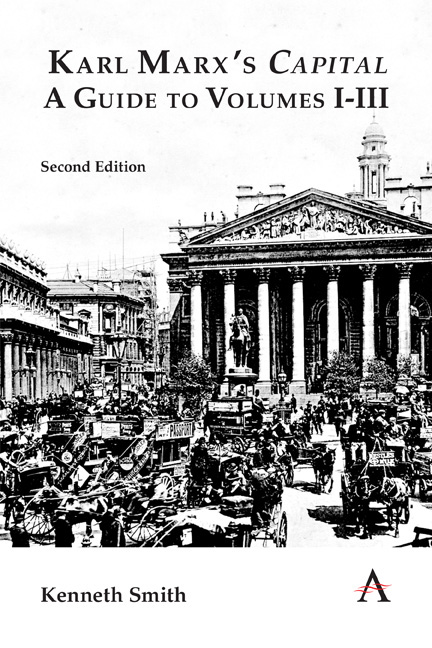Book contents
- Frontmatter
- Dedication
- Contents
- Preface to the Second Edition
- Introduction
- Part I The Development of the Capitalist Mode of Production
- Part II The Capitalist Mode of Production
- Part III The Underdevelopment of the Capitalist Mode of Production
- Part IV The Value Theory of Labour
- Conclusion to Part IV
- Conclusion
- Appendix: On Social Classes
- Notes
- Bibliography
- Index
- Frontmatter
- Dedication
- Contents
- Preface to the Second Edition
- Introduction
- Part I The Development of the Capitalist Mode of Production
- Part II The Capitalist Mode of Production
- Part III The Underdevelopment of the Capitalist Mode of Production
- Part IV The Value Theory of Labour
- Conclusion to Part IV
- Conclusion
- Appendix: On Social Classes
- Notes
- Bibliography
- Index
Summary
We are now returning to those conceptually difficult sections of Capital, Vol. I, Part I (Ch. 1 to 9), which although presented first by Marx in the order which he described as the ‘scientific exposition’ of his argument, he nevertheless sometimes advises his readers to read last, or at least after they had read the much less demanding second half of Vol. I. Here, therefore, I go back to consider those sections which I have so far deliberately neglected, in which Marx elaborates his views on the rate of surplus value, the degree of exploitation of labour by capital and the labour theory of value (1974a, 43–221 [1976, 125–339]), in the belief that the reader who has come this far, and is now familiar with Marx's way of describing things, will be better able to understand those very difficult chapters at the start of Capital, Vol. I than they otherwise would have been.
We have already looked at the difference between Marx's concept of profit and his concept of surplus value earlier in this book (Part II, Ch. 5 and 6). Here we saw Marx argues that the absolute surplus value produced by a capitalist process of production is usually very much greater than the apparent surplus, or profit, since unpaid labour not only produces the capitalist's profit but also recreates – and, according to Marx, produces anew – the value of the worn-out constant capital employed during the process of production. We are now going on to look at what Marx has to say on the parallel question of the difference between the rate of profit and the rate of surplus value. While Marx argues that profit can at first sight only be formally distinguished from surplus value (so much so that this distinction had almost entirely eluded classical political economy before him), he claims that the rate of profit can be much more easily distinguished from the rate of surplus value, and the magnitude of the free gift that labour makes to capital much more easily demonstrated, than when the difference between profit and surplus value is expressed in absolute terms (MESW, 1953, 246).
- Type
- Chapter
- Information
- Publisher: Anthem PressPrint publication year: 2021



